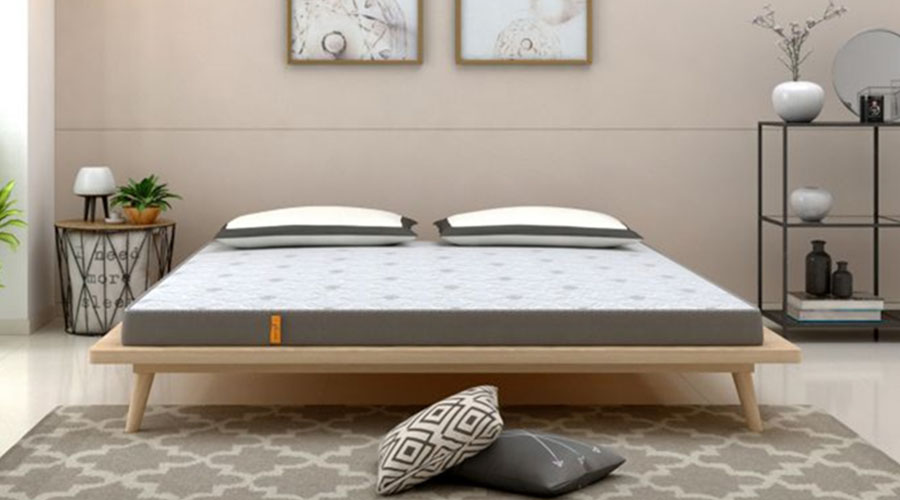Choosing the right mattress is a pivotal decision that can significantly affect your sleep quality and overall well-being. With a wide range of options available, making an informed choice requires careful consideration of various factors. A good mattress supports your body, alleviates pressure points, and enhances your overall sleep experience.
To simplify this process, we’ve created a comprehensive guide that outlines six essential steps for making the best mattress decision. Each step focuses on important criteria to consider, ensuring that you choose a mattress that perfectly aligns with your needs. For a more in-depth understanding of available options and features, refer to our detailed mattress decision making guide. By following these steps, you’ll be well-equipped to find the perfect mattress that offers comfort, support, and value for your investment.
1. Assess Your Sleep Position
The first step in choosing the right mattress is to consider your primary sleep position. Whether you’re a side, back, or stomach sleeper, each position requires different levels of support and comfort. Side sleepers often benefit from softer mattresses that alleviate pressure on the shoulders and hips. Back sleepers typically require medium-firm support to maintain proper spinal alignment. Stomach sleepers generally need firmer mattresses to prevent their hips from sinking too deeply.
Understanding your sleep position will guide your choices in firmness and material. For example, if you tend to switch positions during the night, a hybrid mattress might provide the versatility you need. Identifying your primary sleep position is crucial for ensuring a comfortable and supportive sleep environment.
2. Determine Your Firmness Preference
Mattress firmness is another critical factor to consider. Firmness levels can range from soft to extra firm, and your preference largely depends on your body type, weight, and personal comfort. Generally, softer mattresses provide a “sink-in” feeling, while firmer mattresses offer more support and help keep your spine aligned.
If you’re unsure about your firmness preference, consider how you currently feel on your existing mattress. If you frequently wake up with aches and pains, you might need a firmer option. On the other hand, if you feel uncomfortable due to pressure points, a softer mattress may be more suitable. Testing various firmness levels in-store can also help you identify your ideal comfort level.
3. Explore Different Mattress Types
Understanding the various types of mattresses is essential for making an informed decision. Each type—memory foam, pocket sprung, hybrid, latex, and pillow top—offers unique benefits and features. For instance, memory foam mattresses are excellent for contouring to your body and providing pressure relief, making them ideal for side sleepers. Pocket sprung mattresses offer individualized support through independently moving springs, which can be beneficial for those who share a bed.
Hybrid mattresses combine the best of both worlds by integrating foam layers with pocket springs, providing both comfort and support. Latex mattresses are known for their durability and breathability, while pillow top mattresses offer an extra layer of plush comfort. Understanding the pros and cons of each type will help you narrow down your options based on your specific needs.
4. Set Your Budget
Budget is a significant consideration when purchasing a mattress. Prices can vary widely based on the type, brand, and features of the mattress. Determine a price range that works for you, keeping in mind that investing in a quality mattress can improve your sleep experience significantly.
While it’s tempting to opt for the cheapest option, remember that a higher price often correlates with better materials and durability. Look for sales or discounts, as many retailers offer competitive prices. Additionally, consider options like financing or payment plans, which can make it easier to invest in a quality mattress without breaking the bank.
5. Consider Special Features
Different mattresses come with various features designed to enhance comfort and support. For example, cooling gel layers can help regulate temperature for hot sleepers, while hypoallergenic materials can be beneficial for those with allergies. Edge support is another feature worth considering, as it prevents sagging and allows you to use the entire surface of the mattress.
Additionally, some mattresses offer motion isolation technology, which is ideal for couples. If one partner frequently shifts during the night, a mattress with good motion isolation can minimize disturbances. Identify any specific features that are important for your comfort and well-being, and use them to guide your selection.
6. Take Advantage of Sleep Trials and Warranties
Finally, take advantage of sleep trials and warranties offered by mattress retailers. Many brands provide sleep trials, allowing you to test the mattress for a specified period—often between 30 to 100 nights. This is particularly useful for ensuring that the mattress meets your comfort needs in a real-world setting.
Warranties also provide peace of mind regarding any defects or wear and tear. A good warranty typically covers several years and can protect your investment. Familiarize yourself with the terms of these trials and warranties to ensure you’re making a safe purchase.
FAQs
What type of mattress is best for back pain?
Medium-firm mattresses are often recommended for back pain, as they provide adequate support while conforming to the body’s natural curves.
How do I know if I need a soft or firm mattress?
Your sleeping position and personal comfort preferences will guide your choice. Side sleepers typically prefer softer mattresses, while back and stomach sleepers may benefit from firmer options.
Can I return a mattress if I don’t like it?
Many retailers offer sleep trials that allow you to return the mattress within a specified period if it doesn’t meet your needs.
How often should I replace my mattress?
Most mattresses should be replaced every 7 to 10 years, depending on their materials and wear.
What features should I look for in a mattress?
Consider features such as cooling technologies, edge support, motion isolation, and hypoallergenic materials based on your specific needs.
Conclusion
Making the right mattress decision involves careful consideration of several factors, including sleep position, firmness preference, mattress type, budget, and special features. By following this six-step guide, you can ensure that your new mattress meets your individual needs and contributes to a restful night’s sleep.
Don’t forget to take advantage of sleep trials and warranties to protect your investment. For more information on selecting the perfect mattress, refer to our comprehensive mattress decision making guide. A well-chosen mattress can significantly enhance your sleep quality and overall health, so take your time and make an informed decision.



